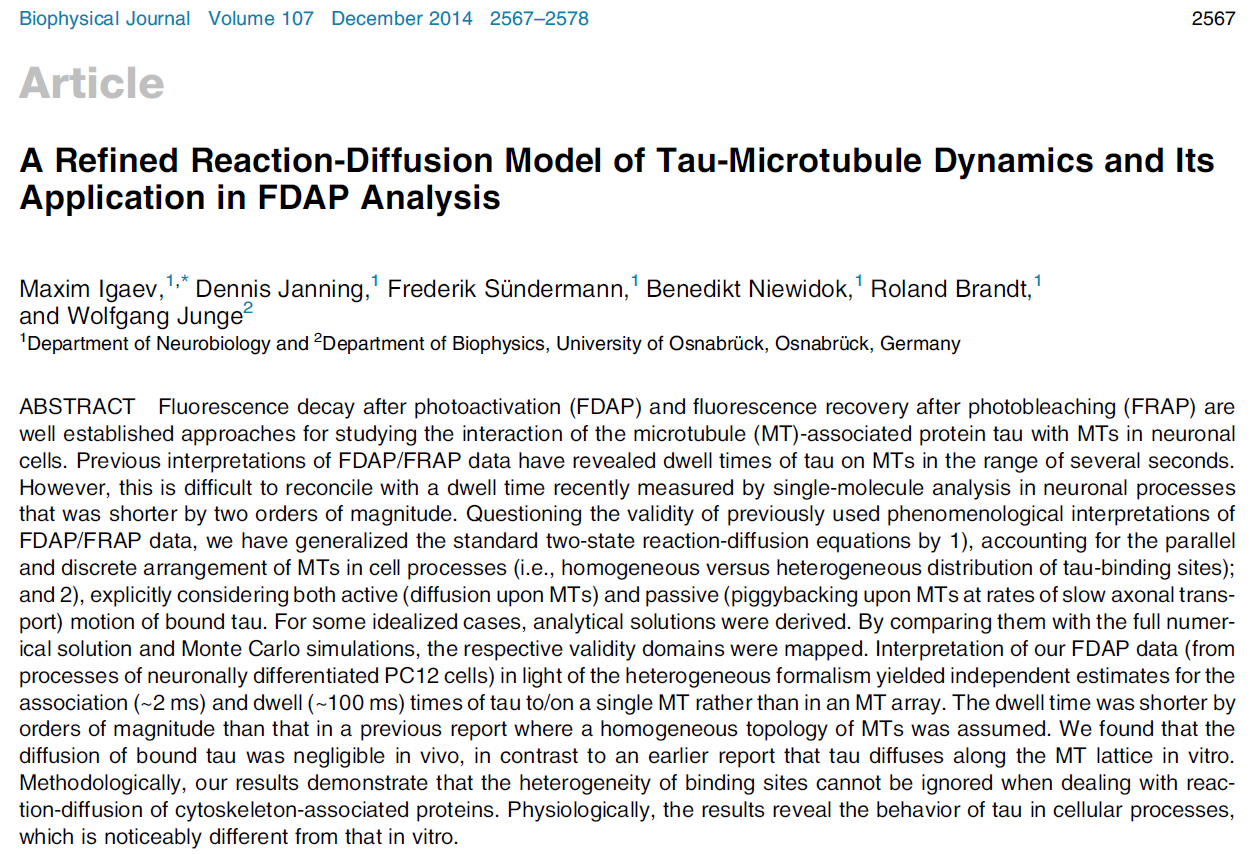Science News
A Refined Reaction-Diffusion Model of Tau-Microtubule Dynamics and Its Application in FDAP Analysis
Mag 05, 2020 | News

ABSTRACT Fluorescence decay after photoactivation (FDAP) and fluorescence recovery after photobleaching (FRAP) are well established approaches for studying the interaction of the microtubule (MT)-associated protein tau with MTs in neuronal cells. Previous interpretations of FDAP/FRAP data have revealed dwell times of tau on MTs in the range of several seconds. However, this is difficult to reconcile with a dwell time recently measured by single-molecule analysis in neuronal processes that was shorter by two orders of magnitude. Questioning the validity of previously used phenomenological interpretations of
FDAP/FRAP data, we have generalized the standard two-state reaction-diffusion equations by 1), accounting for the parallel and discrete arrangement of MTs in cell processes (i.e., homogeneous versus heterogeneous distribution of tau-binding sites); and 2), explicitly considering both active (diffusion upon MTs) and passive (piggybacking upon MTs at rates of slow axonal transport) motion of bound tau. For some idealized cases, analytical solutions were derived. By comparing them with the full numerical solution and Monte Carlo simulations, the respective validity domains were mapped. Interpretation of our FDAP data (from processes of neuronally differentiated PC12 cells) in light of the heterogeneous formalism yielded independent estimates for the association (~2 ms) and dwell (~100 ms) times of tau to/on a single MT rather than in an MT array. The dwell time was shorter by orders of magnitude than that in a previous report where a homogeneous topology of MTs was assumed. We found that the diffusion of bound tau was negligible in vivo, in contrast to an earlier report that tau diffuses along the MT lattice in vitro. Methodologically, our results demonstrate that the heterogeneity of binding sites cannot be ignored when dealing with reaction-diffusion of cytoskeleton-associated proteins. Physiologically, the results reveal the behavior of tau in cellular processes, which is noticeably different from that in vitro.
https://www.ncbi.nlm.nih.gov/pmc/articles/PMC4255205/pdf/main.pdf
Written by tubinAD
